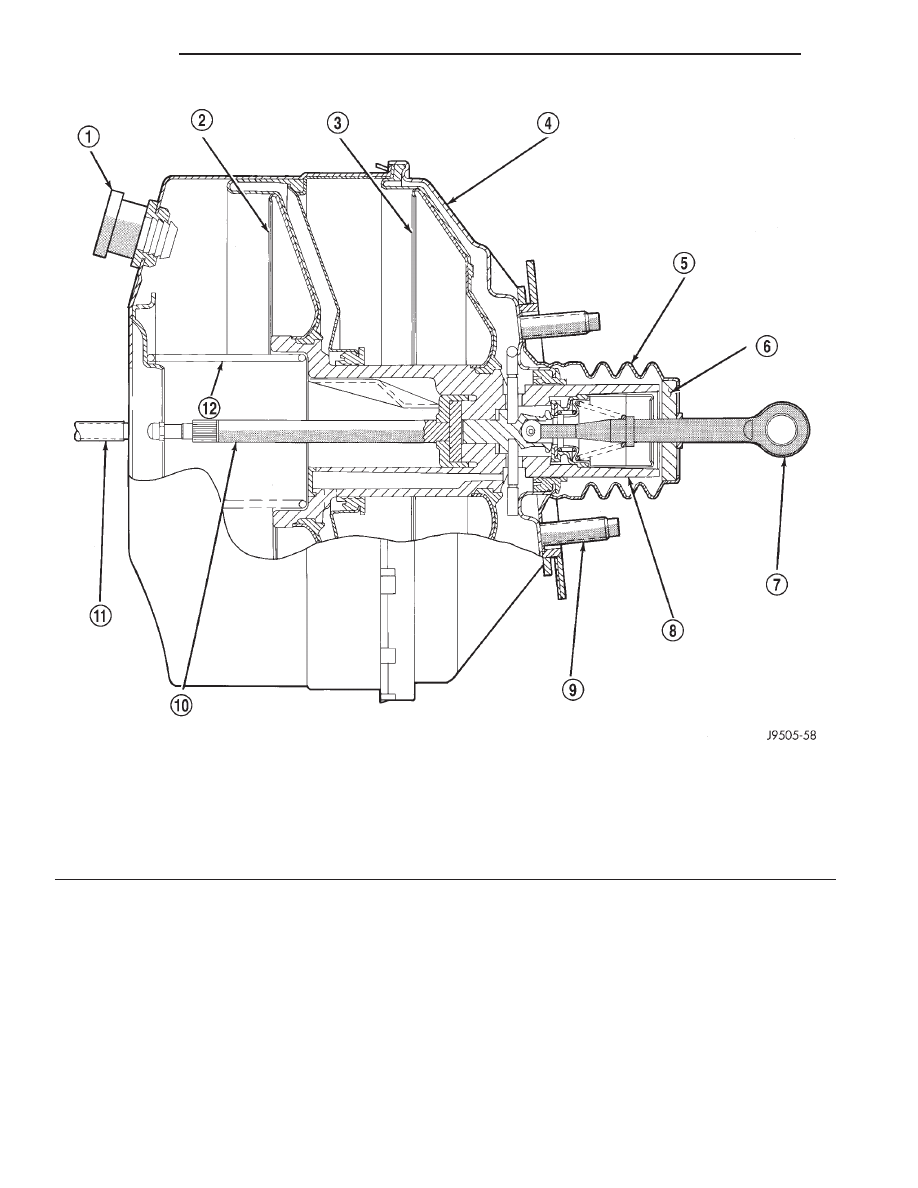Jeep Grand Cherokee WJ. Manual - part 49

FRONT DISC BRAKES
DESCRIPTION
The calipers are twin piston type. The calipers are
free to slide laterally on the anchor, this allows con-
tinuous compensation for lining wear.
OPERATION
When the brakes are applied fluid pressure is
exerted against the caliper pistons. The fluid pres-
sure is exerted equally and in all directions. This
means pressure exerted against the caliper pistons
and within the caliper bores will be equal (Fig. 2).
Fluid pressure applied to the pistons is transmit-
ted directly to the inboard brake shoe. This forces the
shoe lining against the inner surface of the disc
brake rotor. At the same time, fluid pressure within
the piston bores forces the caliper to slide inward on
the slide pins. This action brings the outboard brake
shoe lining into contact with the outer surface of the
disc brake rotor.
Fig. 1 Power Brake Booster–Typical
1 – VACUUM CHECK VALVE
2 – FRONT DIAPHRAGM
3 – REAR DIAPHRAGM
4 – HOUSING
5 – SEAL
6 – AIR FILTER
7 – PRIMARY PUSH ROD (TO BRAKE PEDAL)
8 – ATMOSPHERIC INLET VALVE ASSEMBLY
9 – BOOSTER MOUNTING STUDS (4)
10 – SECONDARY PUSH ROD (TO MASTER CYLINDER)
11 – MASTER CYLINDER MOUNTING STUD (2)
12 – SPRING
5 - 4
BRAKES
WJ
DESCRIPTION AND OPERATION (Continued)